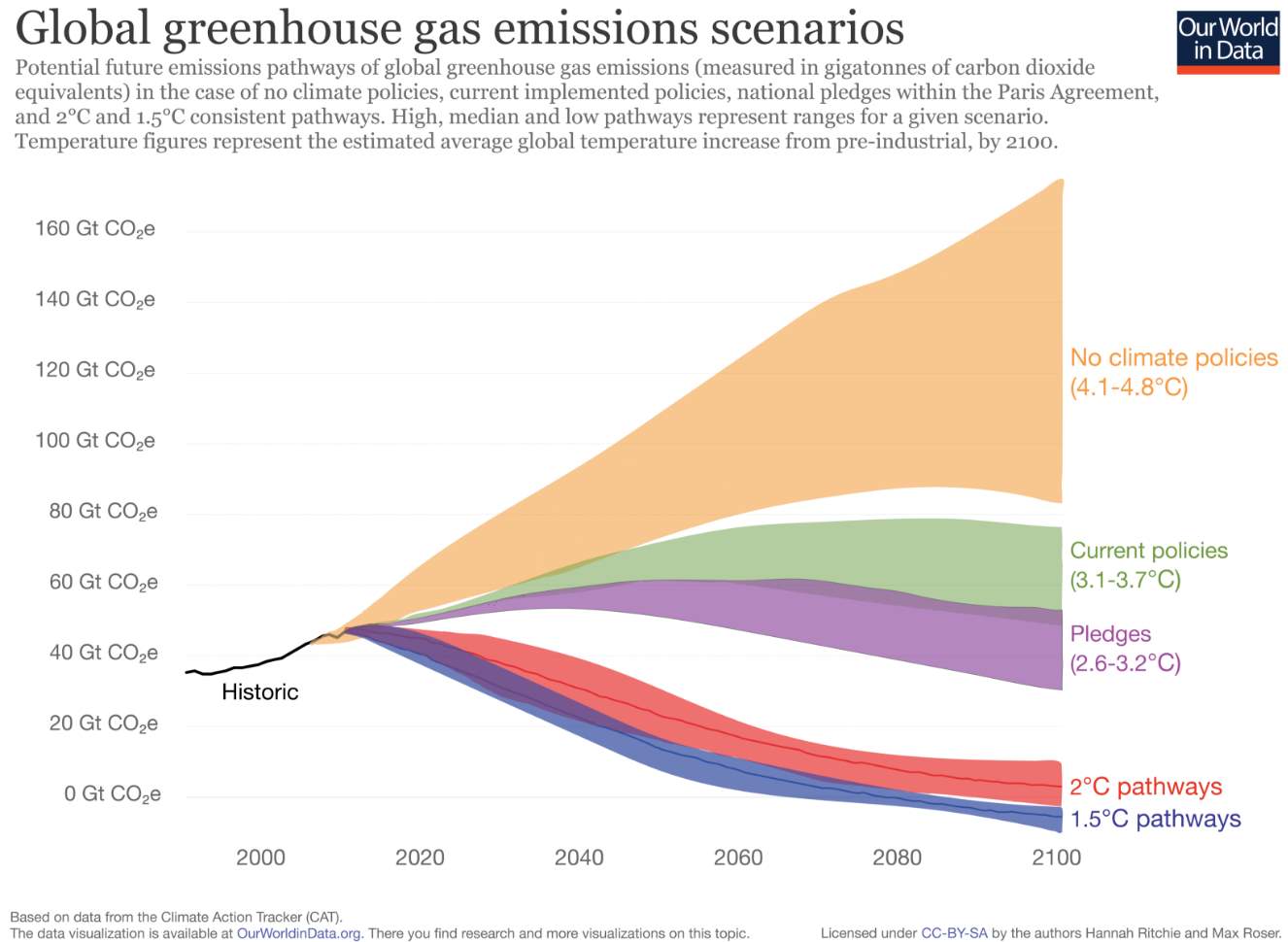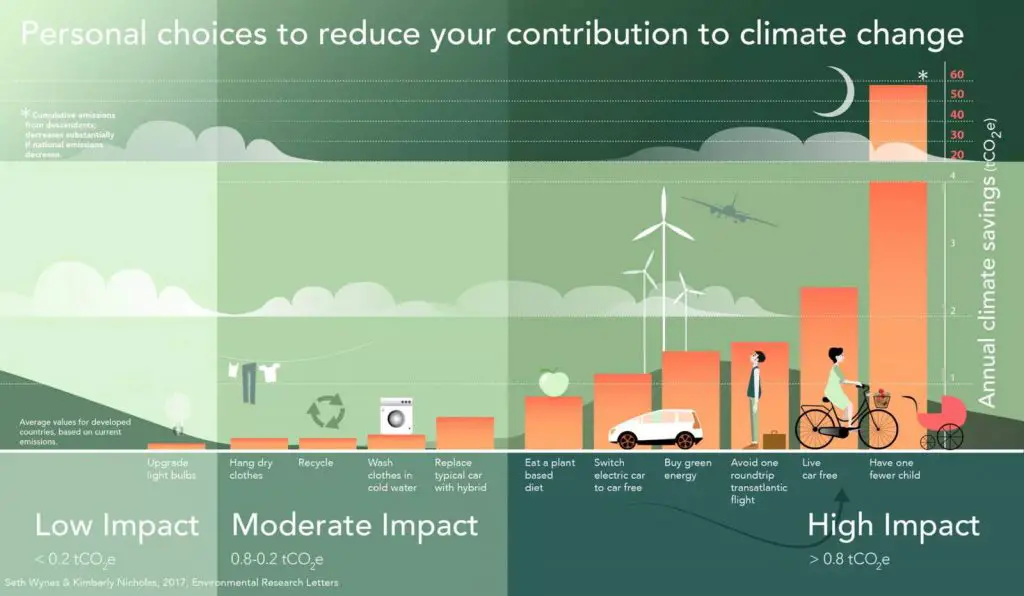The future of our carbon dioxide and greenhouse gas emissions will decide how many degrees will planet Earth be warmer by 2100 (relative to pre-industrial temperatures). Using the data from Climate Action Tracker, the online publication that shows how living conditions are changing, Our World In Data has published a chart showing future greenhouse gas emission scenarios and how each scenario would result in estimated global warming by 2100.

Five future greenhouse gas emission scenarios
What does the future of our carbon dioxide and greenhouse gas emissions (see notes 1) look like? In the chart below, it has been shown a range of potential future scenarios of global greenhouse gas emissions (measured in gigatonnes of carbon dioxide equivalents), based on data from Climate Action Tracker. Here, five scenarios are shown:
- No climate policies: projected future emissions if no climate policies were implemented; this would result in an estimated 4.1-4.8°C warming by 2100 (relative to pre-industrial temperatures).
- Current climate policies: projected warming of 3.1-3.7°C by 2100 based on currently implemented climate policies.
- National pledges: if all countries achieve their current targets/pledges set within the Paris climate agreement, it’s estimated average warming by 2100 will be 2.6-3.2°C. This will go well beyond the overall target of the Paris Agreement to keep warming “well below 2°C”.
- 2°C consistent: there is a range of emissions pathways that would be compatible with limiting average warming to 2°C by 2100. This would require a significant increase in the ambition of the current pledges within the Paris Agreement.
- 1.5°C consistent: there is a range of emissions pathways that would be compatible with limiting average warming to 1.5°C by 2100. However, all would require a very urgent and rapid reduction in global greenhouse gas emissions.
Interactive data of these pathways is below:

What you can do?
You can do many things to reduce your carbon footprint. According to a study published in Environmental Research Letters, having one fewer child, for example, equates to a reduction of 58 tonnes of CO2 for each year of a parent’s life.
Researchers calculated that tonnes of CO2 equivalent per year for one person undertaking each action:
- 58.60 Having one fewer child
- 2.40 living car-free
- 1.60 Avoiding one roundtrip transatlantic flight
- 1.47 Buying green energy
- 1.15 Switching electric car to car-free
- 0.82 Eating a plant-based diet
- 0.52 Replacing the typical car with hybrid
- 0.25 Washing clothes in cold water
- 0.21 Hang-drying clothes
- 0.21 Recycling
- 0.10 Upgrading light bulbs
According to the article titled “the carbon footprint of global tourism” on Nature, between 2009 and 2013, the travel sector accounts for 8% of global carbon emissions. And keep in mind that this sector is set to grow at 4% per annum.
So, the emissions caused by travel need to reduce. The Million Mile Secrets website published a detailed guide titled “Staying Green While Traveling: How to Reduce Your Carbon Footprint!”. With this guide, you can learn how you can contribute to fighting against climate change while traveling.
Notes
- A greenhouse gas is a gas in an atmosphere that absorbs and emits radiant energy within the thermal infrared range. This process is the fundamental cause of the greenhouse effect (the process by which radiation, from a planet’s atmosphere, warms the planet’s surface to a temperature above what it would be without its atmosphere). The primary greenhouse gases in Earth’s atmosphere are water vapor, carbon dioxide, methane, nitrous oxide, and ozone. Without greenhouse gases, the average temperature of Earth’s surface would be about -18 °C (0 °F), rather than the present average of 15 °C (59 °F).
Sources
- Hannah Ritchie and Max Roser (2018) – “CO₂ and other Greenhouse Gas Emissions”. Published online on OurWorldInData.org
- Greenhouse gas on Wikipedia
- Space Shuttle Endeavour’s Touchdown Meets Columbia’s Salute [An amazing photo from the past] - February 29, 2024
- Moon Landings: All-Time List [1966-2024] - February 23, 2024
- From Orbit to Ordinary: 10 Earthly Applications of Space Technology - January 23, 2024


